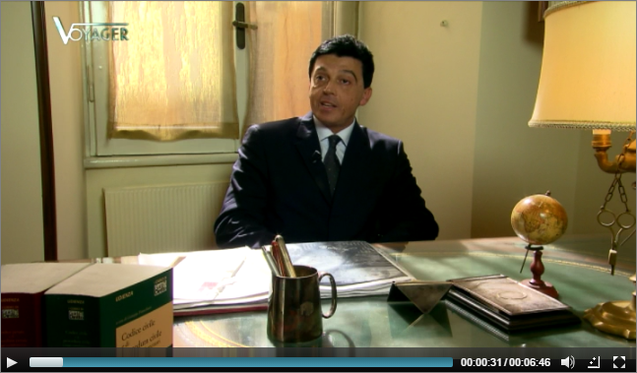Il caso Roso: una variante sconosciuta del sesso umano
Pubblicato da UNISED in Neuroscienze Applicate · Mercoledì 04 Mar 2015 · 2:45
Tags: Il, caso, Roso, Vincenzo, Lusa
Tags: Il, caso, Roso, Vincenzo, Lusa
Al 67° Meeting Annuale della American Academy of Forensic Sciences, la più prestigiosa organizzazione di esperti di scienze forensi del mondo, il Prof. Vincenzo Lusa, docente di UNISED, e la collega Prof. Annarita Franza, hanno presentato la loro straordinaria scoperta scientifica della quale stanno parlando oltre duecento testate giornalistiche. Qui di seguito si riportano copia di uno degli articoli pubblicati unitamente al link dal quale si può scaricare una piccola raccolta degli articoli pubblicati sulla scoperta.
The Roso Case
Fonte: American Academy of Forensic Sciences
ORLANDO, Florida, February 26, 2015 /PRNewswire/ --
At the American Academy of Forensic Sciences' 67th Annual Meeting, which was held in Orlando (Fl) on February 19, 2015, Professor Annarita Franza and Professor Vincenzo Lusa gave a seminar to a capacity crowd on a dramatic forensic case that identifies a previously unknown variation of the human sex. This extraordinary identification was made possible by the discovery of a divorce trial held in 19th-century Florence.

On July 15, 1805 an initial application was filed at the Court of the Episcopal Curia of Fiesole by the husband Dionisio Degli Innocenti to dissolve his marriage to Maria Rosa Fantini. On January 10, 1806 the claim filed by Dionisio was rejected and the validity of the marriage confirmed. Subsequently, on February 13, 1818, Dionisio asked for an annulment before the Episcopal Court of Florence where a second report was filed, entrusted this time to Vincenzo Chiarugi, the most famous anatomist at that time and father of Italian psychiatry. On the basis of the anatomical data, Chiarugi ended his report raising doubts about Maria Rosa's sex. Thus, the marriage was dissolved the following May 13. On February 9, 1839, Maria Rosa was taken to Florence's Santa Maria Nuova Hospital. There she was recognized by the surgeon Giuseppe Chiarugi, son of the previously mentioned anatomist. Transported to the men's infirmary, the physician Stanislao Petri changed her name from the feminine Rosa to the masculine Roso. Struck by the sick woman's overwhelming state of grief caused by this episode, Petri's clinical notes included an interview with Maria Rosa in which she blamed her state of moral prostration on facing the end of her life, in her words "in the midst of the confusion of the opposite sex." Maria Rosa then stated, "My name is Rosa, I have been and am a woman and I am surprised at how these gentlemen want me to die here, among men." Maria Rosa died on April 16, 1839. Her death was recorded under the name of Roso Fantini.
During the seminar, the authors put forward a theory of the morpho-anatomical classification of the Roso Case, based on the morphological comparison between Maria Rosa's physical appearance and the clinical features of the most common disorders of sex development (DSD).
http://www.cbs8.com/story/28212158/the-roso-case
http://www.nbc26.tv/story/28212178/the-roso-case
http://www.bizjournals.com/chicago/prnewswire/press_releases/Georgia/2015/02/26/enUK201502269836?ana=prnews
http://www.fox8live.com/story/28212178/the-roso-case




